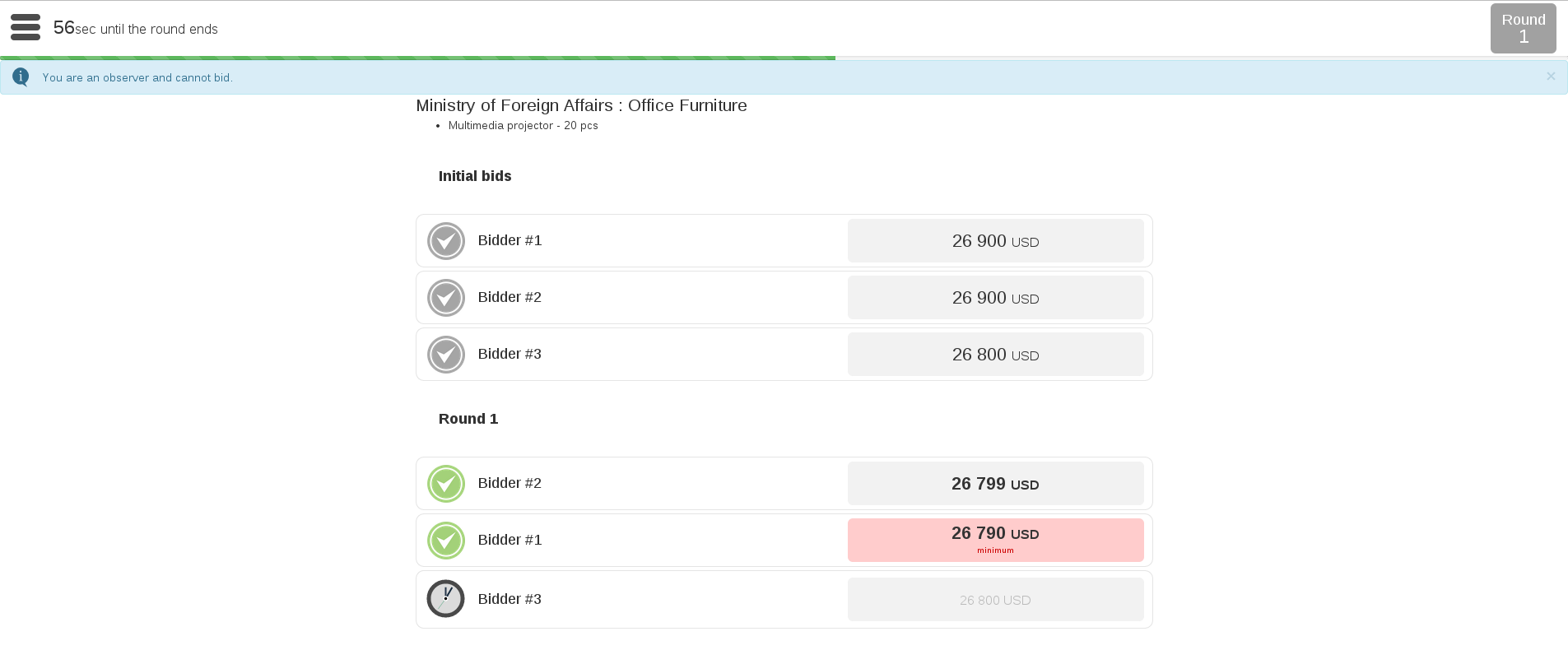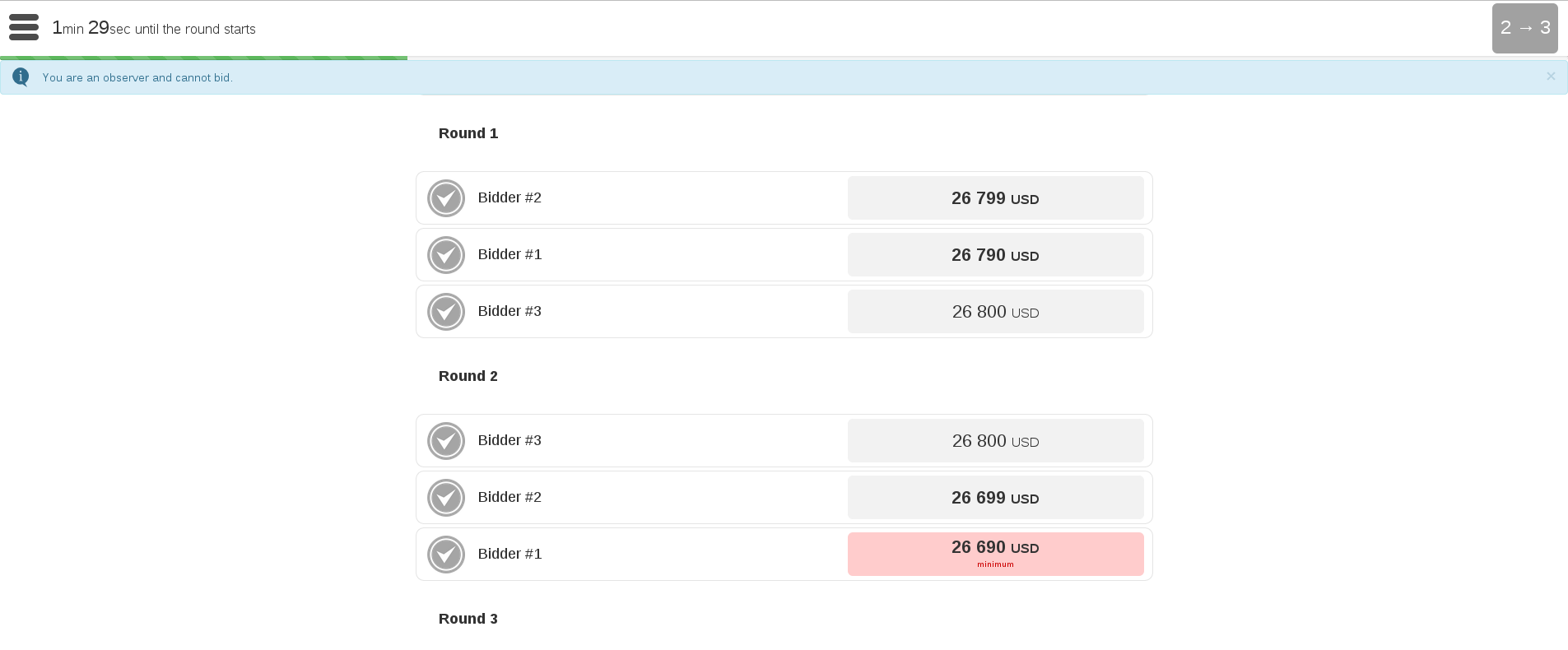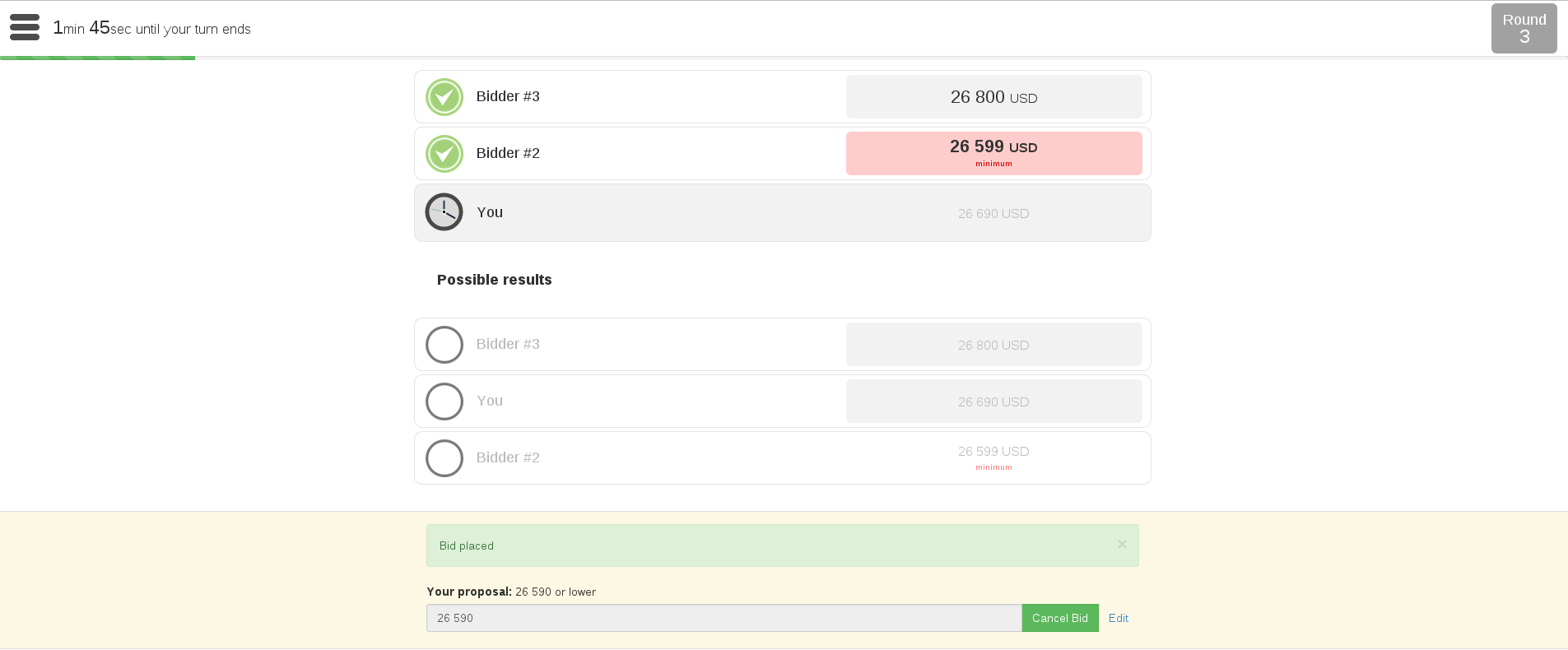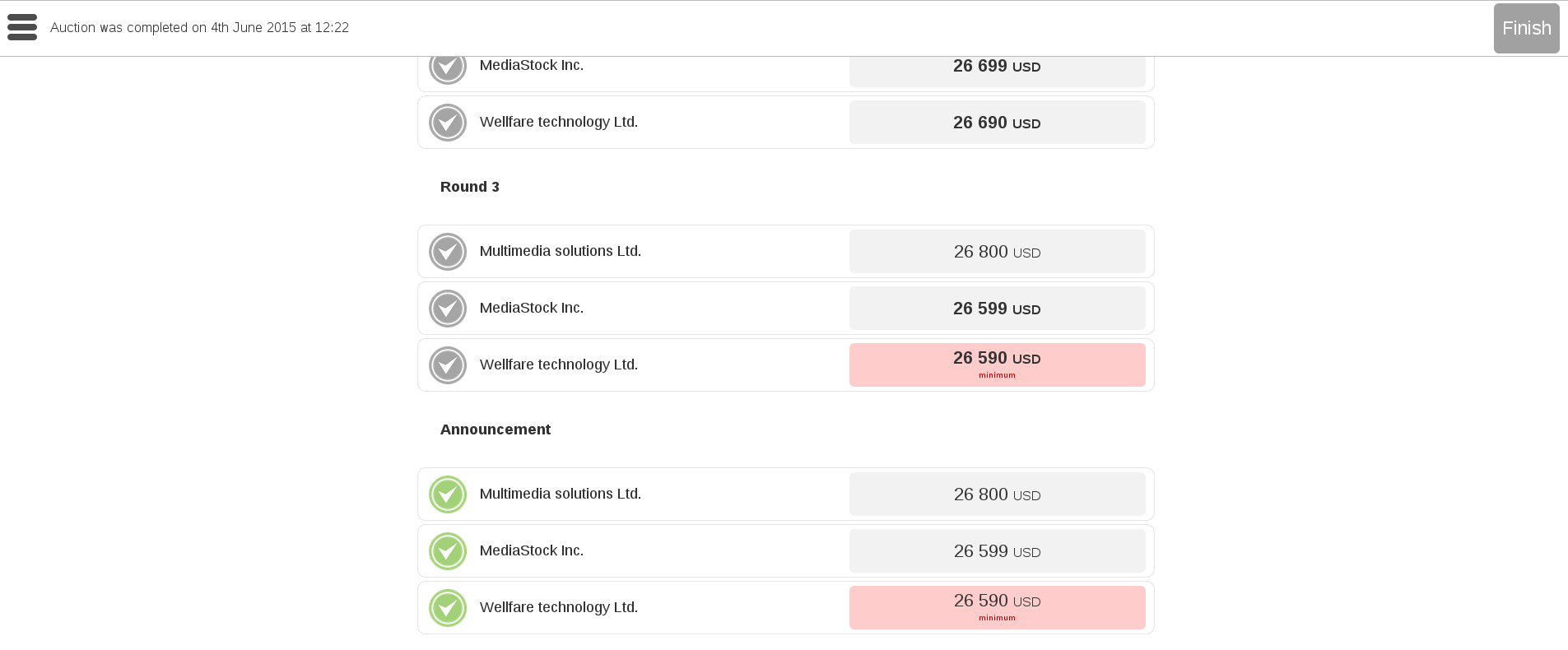The Open Procurement toolkit is an open source software complex developed for procurement automation and optimization. Free and easy to use, it covers conducting of reverse electronic auctions and storing procurement related data.
This article illustrates the work of Auction module that allows conducting time and cost efficient reverse auctions.
Reverse auction is a procedure of determining the candidate with the lowest price offer, where participants have the opportunity for multiple submissions of bids (lowering the sum of price offers).
When Auction module is initiated, auction page where users can monitor the auction progress is created. This auction page displays:
- Number of the auction
- Name of procuring entity
- Procurement subject
- Step reduction of bid
- Start value
- Time count
Users can also choose which language to view the page in.

Once the period for procurement initiation and bid proposals registration ends, auction starts automatically on the pre-announced date and time. All users can monitor the progress of the auction online.
Before the auction starts nobody knows the exact number of participants and their bid proposals. But after the start of auction the system discloses initial bids of participants (anonymously displayed). The system pauses for 5 minutes so that participants can get acquainted with bids of their competitors. Once the 5 minutes period ends the system automatically announces the first round.

eMalls give bidders access to their individual web page of the auction. There, apart from the aforementioned information, there is a field where they can make their bids.

Auction consists of three rounds with identical rules. In each round during 2 minutes each bidder (in order from the higher bid to the lower one, or from later bids to earlier ones, if they coincide) can lower their previous bid. If the participant was inactive for 2 minutes, system will accept his previous bid and pass the turn to the next participant. When all participants make their bids, system pauses for 2 minutes and announces the next round.
The first round

Pause after the second round

The third round

After the third round system ranks all submitted bids automatically by price, forming ratings of bidders positions. This information is published as soon as the electronic reverse auction finishes. Then users can get complete information about bid proposals and participants who submitted them.

